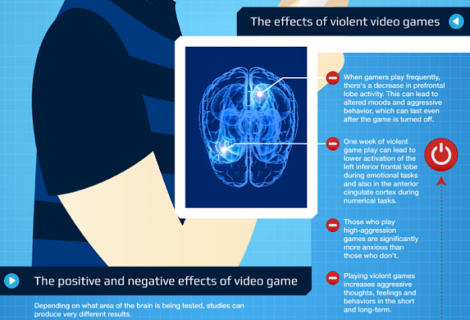Transformative Learning
“What is the connection between a transformative learning approach and the sense of one’s own spirituality? In what way does transformative learning nurture the spirit any more than any other learning style does?”
There are many styles of transformative learning. In general, however, one key aspect of transformative learning the explicit recognition that learning is not an activity that only takes place at a specified time and place built specifically for “learning”. Rather, learning is understood to be a life activity, and as such should be connected to all aspects of life in an integral way. The old, medieval style of education based on disciplinary structures that still dominates Western culture is fraying at the edges — thankfully.
Much of traditional academia is dominated by approaches where one learns “about” topics and ideas. In transformative learning, one learns “with” and “through” ideas by embodying them outside the classroom, in one’s daily life and work. The best transformative learning closes the loop by reciprocally inviting one’s outside activities into the classroom. This sets up a recursive relationship that helps unlock avenues for creative, integral inquiry that otherwise get stifled by a need to fit within an established epistemology, such as the kind implicit in most traditional educational offerings.
Transformative learning styles nurture the spirit because room is made both implicitly and explicitly for what we could call the appearance of the unknown. What you know limits your knowing, and making space for the arising of what is beyond one’s current understanding is central to any transformative process. You can’t fill a cup that is already full, and transformative learning styles take advantage of this wisdom directly by integrating opportunities for unknowing. What is spiritual in the human being is nurtured more by unknowing than by the addition of data to an already established way of being. Transformation occurs not when we change our ideas, but when we change how we know. Learning styles that are transformative in nature utilize this principle directly.
“Is there a place in the workforce for transformative learning? In what way might it be applied on the job?”
What we have to realize is that transformative learning is not just another system of facts and ideas that can be “applied on the job” without a recursive feedback effect on the business itself. It’s not like you can go to work and have an isolated “moment of transformative learning” to fulfill that week’s quota — transformative learning is more like an attitude than a specific system of ideas or practices, and as such it bleeds beyond borders. Most of the techniques and methods used in transformative learning approaches are designed to loosen us from our habitual ways of being in the world. They recognize, for example, that pretty much all the interesting stuff happens at the boundaries. This is where the juice is: where systems, ideas, events, and (most importantly) people meet and interact. Providing avenues for a greater diversity of interactions yields far more than a directed process where the outcome is dictated in advance. That’s good for building widgets, but not so good for the spirit. This has been known in some education circles (like Waldorf education) for about a century: play is not an activity for recess, but a core mode of learning that is, by its nature, transformative. A stick becomes a magic wand, a tent-pole, a sword, a sand-writing tool, and so forth in a dynamic flow. Only the adults, stuck with their more rigid, non-experimental epistemologies, see “just a stick”.
My father, who has been a business consulting psychologist for 25 years with the top management of major corporations like Best Buy, summed up his entire job to me recently by saying that his most important function has been to help his clients learn how to learn. This is an explicit recognition of the difference between the first-order concept of “learning” and the second-order concept of “learning how to learn”, which Gregory Bateson identified decades ago as a key to understanding complex goal-directed systems. In second-order learning, the snake bends back to bite its own tail and in so doing initiates a process of self-digestion. This self-digestion is a part of what is necessary to create the space for something new to arise, and is a stage on the way to an “adult” way of playing that is called “creative inquiry” and “transdisciplinarity” in academic circles.
Transformative learning invites higher-order transformation: not simply a change in what we think and do, but in how we think and how we carry out our actions. More businesses are starting to recognize the value of spaces (both physical and metaphorical spaces) that are not already locked into a pre-defined form, but which invite modification and multiplicity. This is a way of calling attention to and allowing human beings to bring forth the parts of themselves that get excited and passionate when they are simply given the space to be so. Some places, like Google, MIT, and other “big names” consciously utilize principles of transformative learning as a way to nurture diversity, openness, interaction, experimentation, and transformative involvement at various levels. The next level is when businesses begin to re-humanize their practices with the attitude that every “worker” or “employee” is first and foremost a whole human being. But to get there our whole understanding of business will have to transform as well…






Is this writing a fragment from another context?
The act or action of learning can become an experience that may induce a transformation or movement within the soul or inner life of the learner. So therefore, learning is a process that occurs in time, or more acuratly in duration. Strictly thinking(imaginatively) – there is no ‘thing’ that we humans can label or define as transformative learning. The moment we do, it becomes an abstract idea where the transformative quality of a whole human experience of transformation is lost.
What I’m trying to say is that the effect on the reader of your writing itself becomes the opposite of the content you are actually trying to convey. How to write a text that is imbued or sits with the quality of becoming (formative) or potential is the trick. The ‘trans’ part of transformative is a gift of insight shared by both writer and reader, and yet it is not ours to own, to label or abstractly define outside of a formative(creative) process.
When the form and content of a writing are in sinc. then a
learning environment is created where there can be soul movement and then a transformation is possible.
Svetlana